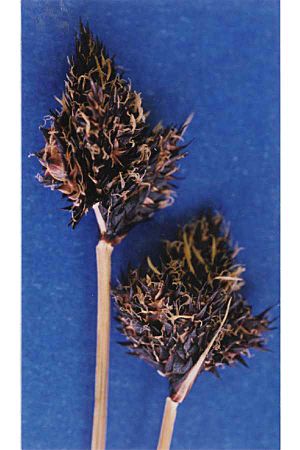Black and white sedge facts for kids
Quick facts for kids Carex albonigra |
|
|---|---|
 |
|
| Scientific classification | |
| Kingdom: | |
| (unranked): | |
| (unranked): | |
| (unranked): | |
| Order: | |
| Family: | |
| Genus: | |
| Species: |
C. albonigra
|
| Binomial name | |
| Carex albonigra Mack.
|
|
Carex albonigra is a type of plant called a sedge. It is also known as the black and white sedge. This plant grows naturally in western North America. You can find it from Alaska and Canada all the way south to California and New Mexico. It likes to grow in dry, rocky places high up in the mountains. Think of areas with lots of loose rocks, like a rocky slope.
This sedge grows in a thick bunch. It usually stands about 10 to 30 centimeters (4 to 12 inches) tall. Its leaves are thin and have a gray-green color.
About the Black and White Sedge
Carex albonigra is a fascinating plant. It belongs to the Cyperaceae family, which is the sedge family. Sedges look a bit like grasses, but they have solid stems that are often triangle-shaped. Grasses usually have hollow, round stems.
Where It Grows
This sedge is found in many parts of western North America. Its home stretches across a huge area. You can find it in:
- Alaska
- Most of western Canada
- The western United States, including California and New Mexico
It prefers tough environments. It often grows in high mountain areas. These places are usually dry and rocky. It thrives in places like talus slopes, which are piles of broken rocks at the base of cliffs.
What It Looks Like
The black and white sedge has some unique features:
- Size: It forms a dense clump. This clump is usually 10 to 30 centimeters tall.
- Leaves: Its leaves are narrow. They have a distinct gray-green color.
- Flowers: The plant produces a group of flowers. This group is called an inflorescence. It looks like a head-shaped cluster. This cluster is made of spikes that overlap each other.
- Fruit: The fruit of the sedge is special. It is covered by a sac called a perigynium. This sac is usually dark purple to chestnut brown. It often has a white tip.
See also
- In Spanish: Carex albonigra para niños

